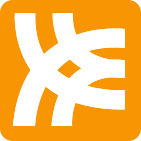 Social media evangelist Bryan Person did Part 2 of our conversation about the iPad on Thursday April 15, 2010. This gave me a chance to revisit my expectations on how good a reading device the iPad would be compared with the Kindle.
Social media evangelist Bryan Person did Part 2 of our conversation about the iPad on Thursday April 15, 2010. This gave me a chance to revisit my expectations on how good a reading device the iPad would be compared with the Kindle.
We spoke 12 days after I had bought my 16GB WiFi-only iPad at the Apple Store at the Cherry Creek Mall in Denver. (Click here for video of my memorable entrance into the store.) In that time, my fascination with the device kept growing.
In this interview, Bryan and I discuss the issue of “serious readers” and whether they will be drawn more to the Kindle than the iPad. I have to confess that since our conversation, I am less inclined to make this distinction. I have read too many accounts like this one of people using the iPad for very serious reading, and my own experience has shown me that I am perfectly at home reading on the iPad for up to an hour. Yes, I sense some discomfort in my eyes from the LCD screen, but the ability to turn down the brightness from within most of the iPad reading apps I use–iBooks, Kindle, Kobo, and Stanza, but not Barnes & Noble–makes it manageable.
I remain in love with my Kindle and am quite sure that reports of its demise are exaggerations, as Mark Twain would have put it. I don’t see this as an either-or proposition. The iPad’s arrival is wondrous, for many reasons beyond the realm of reading books. The Kindle owns the outdoors, and any time I go with Darlene to read outside at a cafe, the iPad stays at home. At home, sometimes I pick up the Kindle, and sometimes I pick up the iPad. I haven’t figured out which situation is which, but I’m having lots of fun experimenting.
And tomorrow, I’ll have another device to explore–the Alex by Spring Design. Stay tuned!
CORRECTION: The monthly price of The Wall Street Journal iPad app is $17.29, which is $2.30 more than The Financial Times US edition on Kindle at $14.99. In the interview, I guessed that the Journal is $5 more.
Click here to download audio of the interview by Bryan.
Podcast: Play in new window | Download





